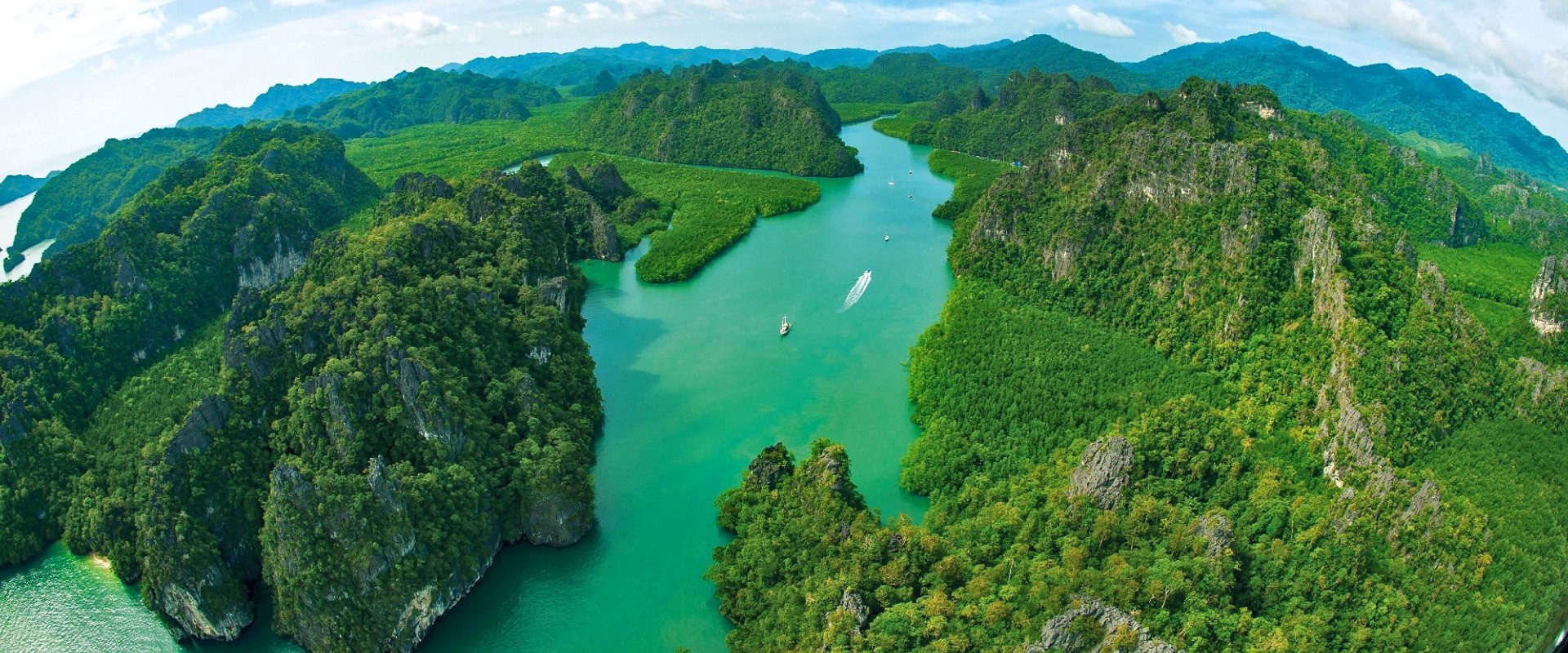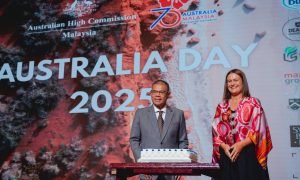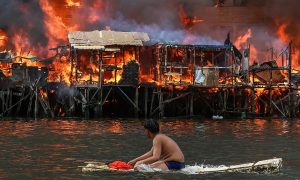When it comes to domestic travel, Langkawi is one of the country’s most popular holiday destinations. Its broader international appeal, however, may lie in the richness of its UNESCO Global Geopark status.
The United Nations Educational, Scientific, and Cultural Organization (UNESCO) has to date named just under 1,200 sites worldwide that hold special significance for humanity in terms of culture, heritage, and nature. These locations, set aside for protection and preservation, are called World Heritage Sites. A disproportionate number – approaching half of all sites inscribed worldwide – are in Europe, some critics have noted.
In fact, with 59 sites on the list, it may surprise you to learn that the relatively small country of Italy is home to the most UNESCO sites, more than all of Southeast Asia combined, whose 10 member states boast just 45 World Heritage Sites. In the region, only tiny Brunei has no such site. Indonesia – perhaps unsurprisingly given its sprawling size – leads the ASEAN region with 10 sites, though Vietnam, with eight, is a remarkably close second.
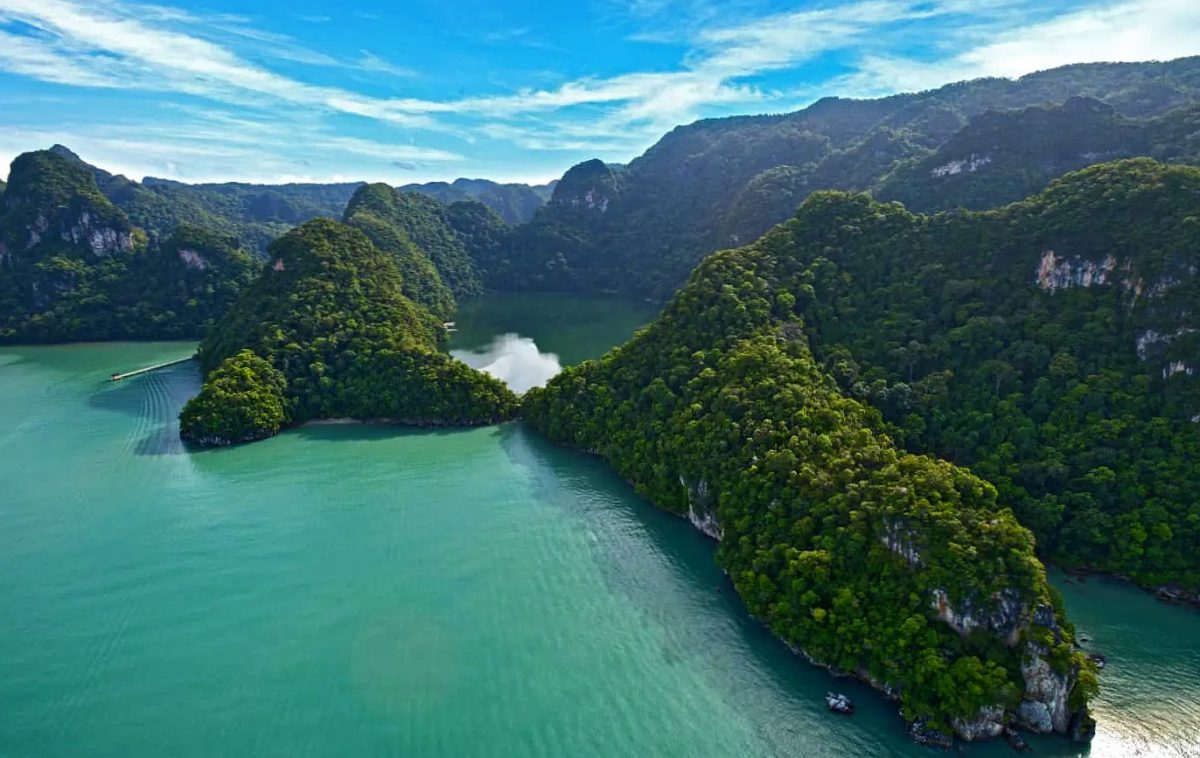
Malaysia has four sites, or, it could be argued five, depending on how you count them: The Archaeological Heritage of the Lenggong Valley, Gunung Mulu National Park, Kinabalu Park, and the Historic Cities of the Straits of Malacca. That last one, although it’s a single UNESCO inscription, curiously includes the two very distinct cities of George Town and Melaka, separated by about 500 km.
Additionally, while it doesn’t fall under the more widely known World Heritage Site designation, Langkawi can nevertheless also lay claim to a meaningful inscription from UNESCO: it’s a Global Geopark. According to UNESCO, geoparks are “single, unified geographical areas where sites and landscapes of international geological significance are managed with a holistic concept of protection, education, and sustainable development.” (Remember that last part; it will be important later.)
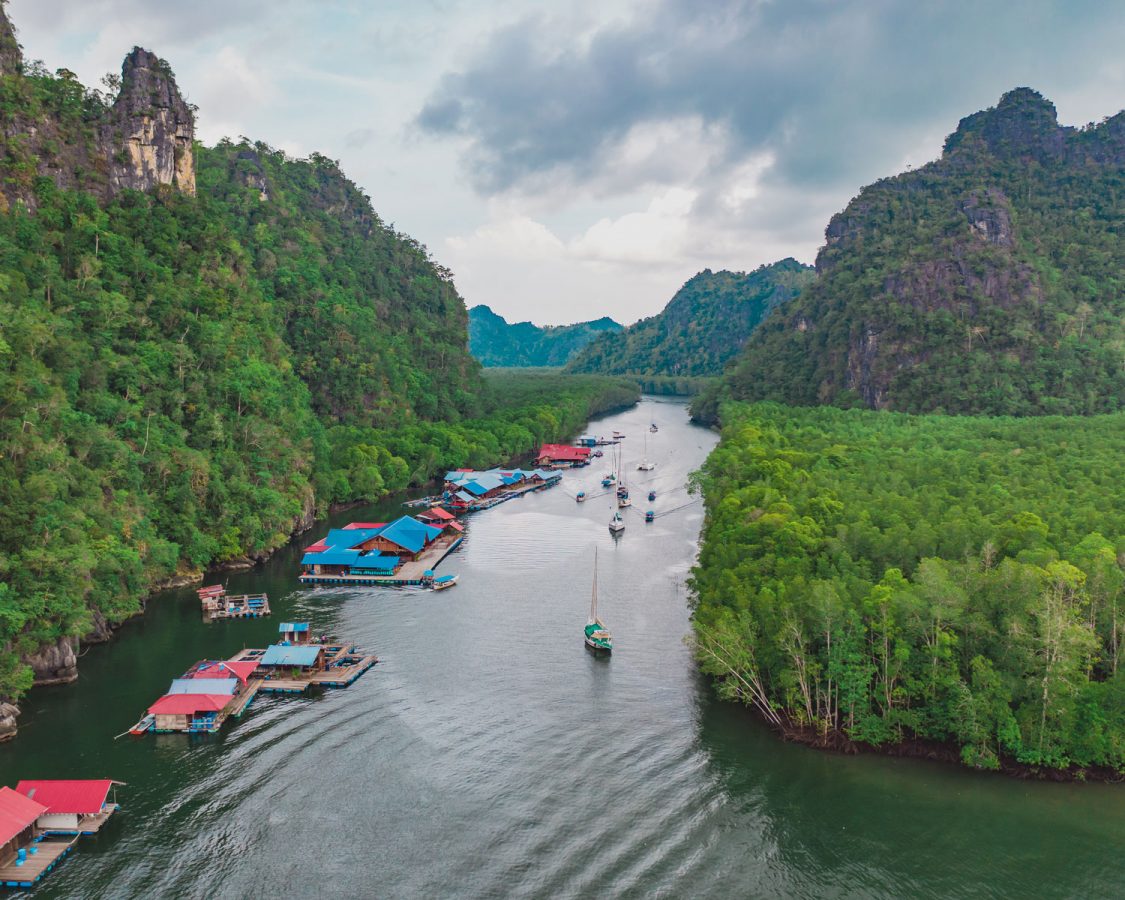
Much like the World Heritage Sites, the list of Global Geoparks is wildly Euro-centric, with the majority of the inscribed geoparks located in that continent. The single country with the most geoparks, however, is China – by far. No other country even comes close to China’s 41 named geoparks – about 20% of the world’s complement of 213 global geoparks.
PARKS AND FORESTS
Up until quite recently, Malaysia had a grand total of one – Langkawi. (In 2023, Sabah gained the country’s second with Kinabalu UNESCO Geopark.) In Langkawi, the global geopark inscription covers the whole of the archipelago, but there are three distinct areas within Langkawi that, while part of the broader geopark, are additionally noted as geoforests or geoforest parks. We’ll understand if you get a little confused.
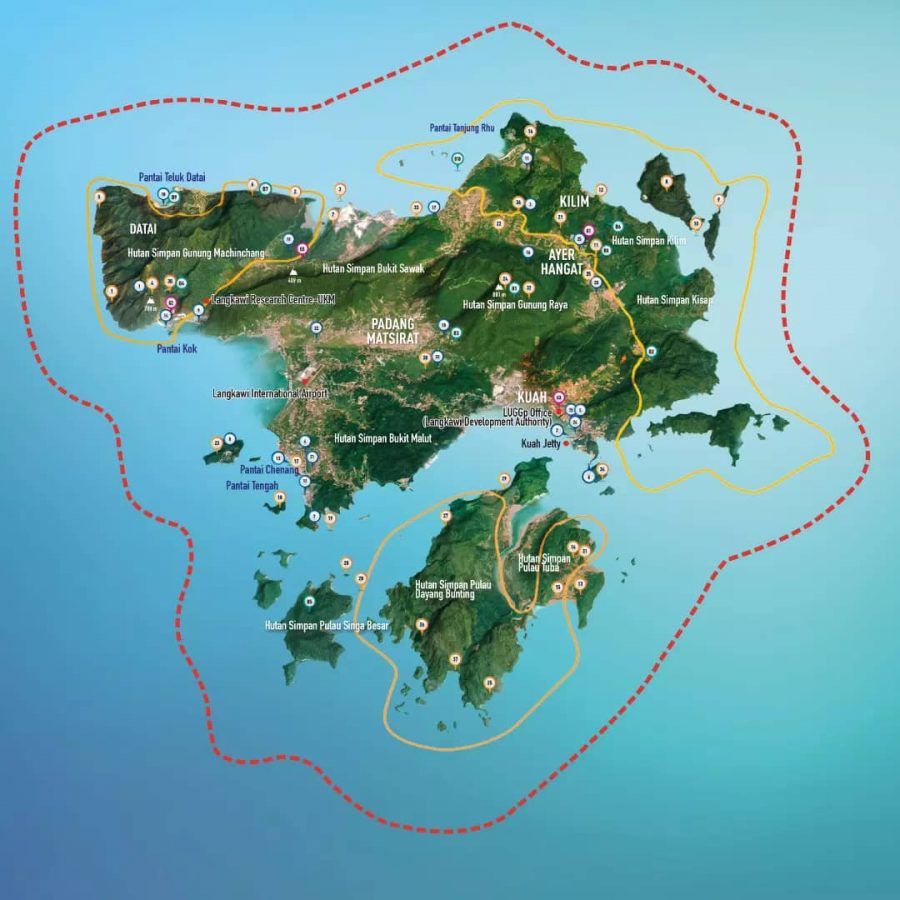
These areas include the Kilim Karst Geoforest Park (in the island’s northeast), Machinchang Cambrian Geoforest Park (northwest), and Dayang Bunting Marble Geoforest Park (south). Only the latter is found outside of the main island of Langkawi.
Kilim Karst is in the far northeast of Langkawi island near the Thai border, and is known for its vast mangrove forests and beautiful forested limestone karst formations. Boat operators have for many years taken visitors on ‘mangrove tours’ here with wildly varying degrees of environmental awareness, some observing modest speed limits in the waters surrounding the mangrove forests and adhering to best practices for interacting with the area’s wildlife, while others speed recklessly along the Kilim River and nearby shallow seas, use polluting two-cycle engines, and provide ‘eagle feeding’ tours with tourists throwing chicken skins and entrails to circling sea eagles and Brahminy kites.

Environmental and wildlife education has slowly made inroads, however, and fortunately, at least some of these practices have taken a turn for the better in recent years. The Kilim Karst area, believed to be the 540-million-year-old birthplace of Southeast Asia, is easily accessible and should be considered a must-visit when including Langkawi in your travel plans.
The opposite corner of the island, meanwhile, Langkawi’s northwest, is home to Gunung Machinchang and its surrounding forested mountain formations comprising Cambrian-era sedimentary sandstone and granite from the first and oldest geological period of the Palaeozoic Era. It’s a stunning part of the island, replete with scenery that is genuinely spectacular, never more so than when viewed from the highest summits of the Machinchang Range, which are fortunately accessed quite easily courtesy of the Langkawi SkyCab, which, at a 42° gradient, is among the world’s steepest cable car rides.
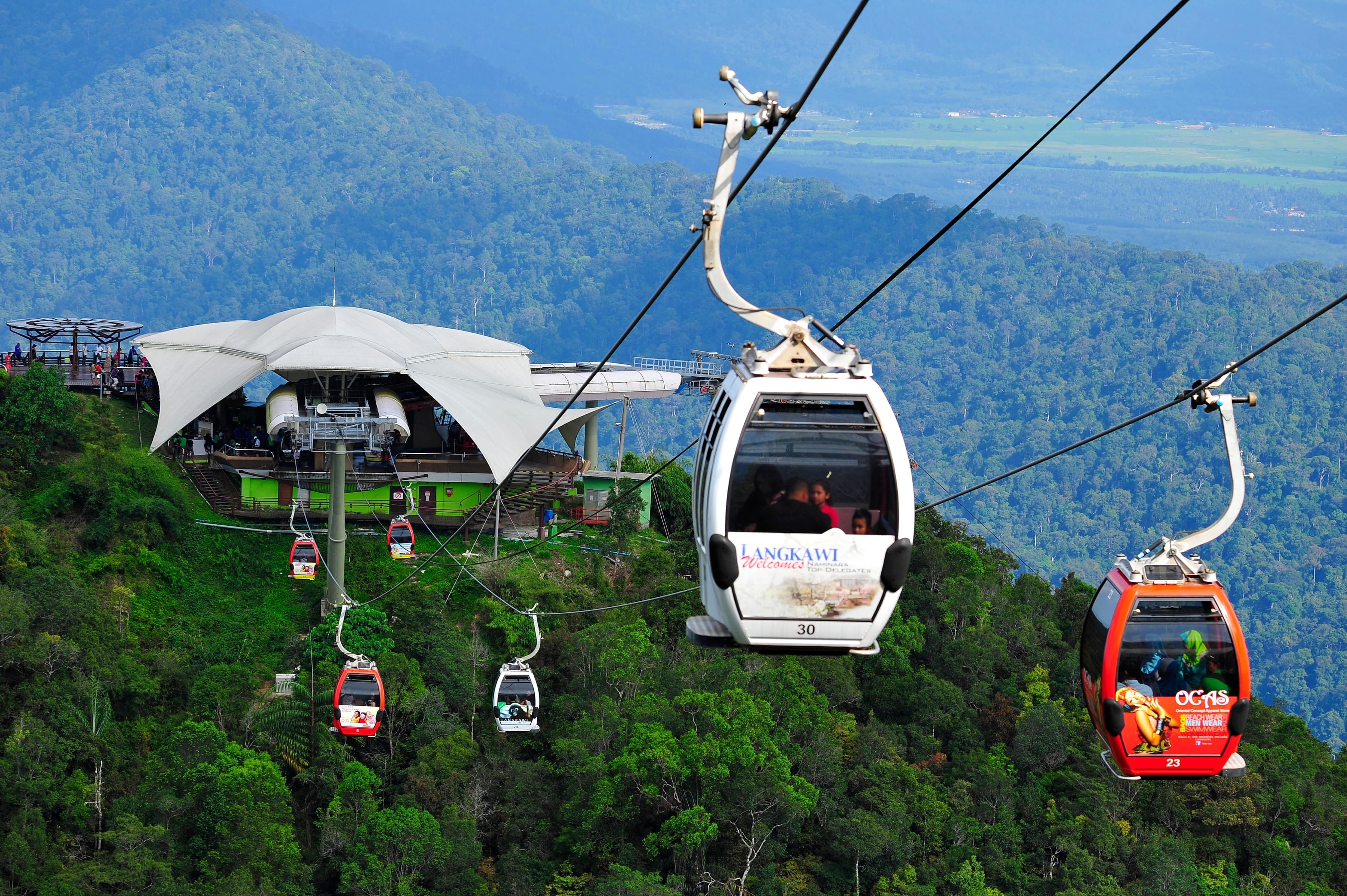
The journey, which takes about 15 minutes in total, also includes the longest unsupported free span between support towers, a breathtaking 950-m distance. From the top, views of the ancient landscape are most impressive, and the 125-m cable-stayed Sky Bridge is also located here, affording visitors the chance to marvel simultaneously at the natural wonders of the lush surroundings and the engineering marvel of this incredible curved suspension bridge, which is supported by eight cables from a single, angled pylon.
Finally, venturing off the main island to the second-largest island of the group, visitors can take in the geological history of Pulau Dayang Bunting, just to the south of the main island. Here, the most well-known feature is the large freshwater Lake of the Pregnant Maiden, which originated from the collapse of an immense limestone cave. On this island as well – whose name translates to ‘pregnant maiden’ owing to some local legends and the shape of its hills – some of the world’s finest Permian-era marble formations can also be seen. Pulau Dayang Bunting is easily reached by boat, usually about a 20-minute ride from Langkawi island. Tourists can find departures from Kuah, Pantai Cenang, and Pantai Tengah.

TROUBLE IN PARADISE
Langkawi’s Global Geopark status is not fixed in perpetuity, however. Remember that part about the park needing to be managed and protected with an emphasis on education and sustainability? Well, it turns out the authorities in Langkawi weren’t terribly bothered with doing any of that after the island got the coveted (and valuable) designation back in 2007. According to UNESCO:
“A Global Geopark is given this designation for a period of four years after which the functioning and quality of each UNESCO Global Geopark is thoroughly re-examined during a revalidation process. As part of the revalidation process, the UNESCO Global Geopark under review has to prepare a progress report and a field mission will be undertaken by two evaluators to revalidate the quality of the UNESCO Global Geopark.”

If, on the basis of the field evaluation report, the UNESCO Global Geopark continues to fulfil the criteria the area will continue as a UNESCO Global Geopark for a further four-year period (‘green card’). If the area no longer fulfils the criteria, the management body will be informed to take appropriate steps within a two-year period (‘yellow card’). Should the UNESCO Global Geopark not fulfil the criteria within two years after receiving a ‘yellow card,’ the area will lose its status as a UNESCO Global Geopark (so-called ‘red card’).
Langkawi came perilously close to losing its Global Geopark status in the wake of the 2011 revalidation process, with a laundry list of dozens of deficiencies handed over to the island’s authorities. Fortunately, UNESCO’s actions – and the intervention of a number of esteemed naturalists and scientists in Langkawi and on the mainland – ensured that attention was paid, and the seriousness with which the value of a UNESCO designation should be taken was ramped up notably, too, at least for a time.
There was another revalidation exercise in 2015, which happily, resulted in an improved assessment. Since that time, each of UNESCO’s assessments of Langkawi’s Geopark have yielded a ‘green card’ status, and that is something worth praising.
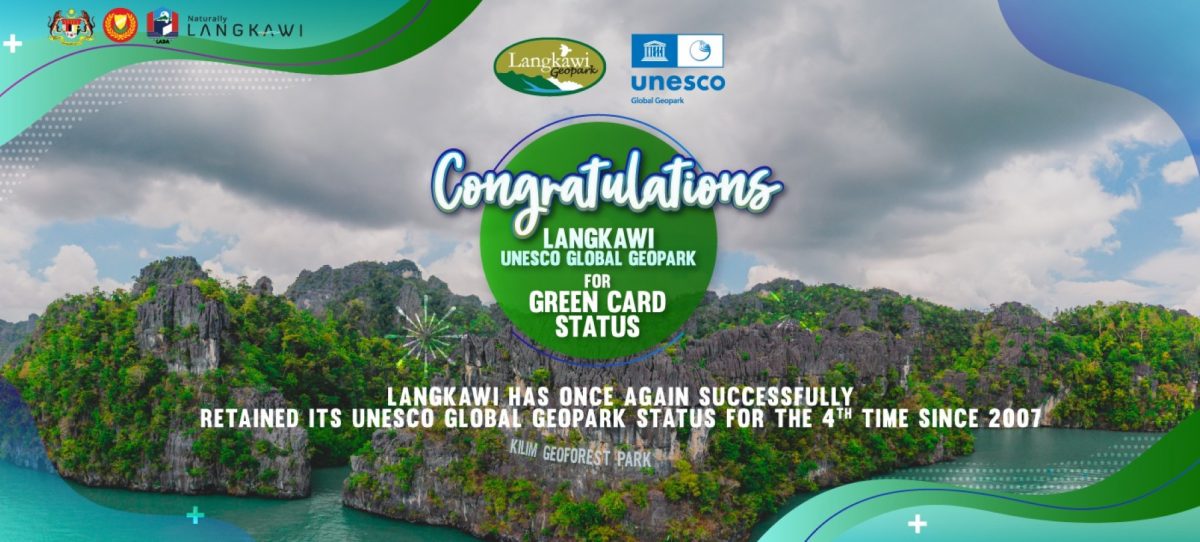
It’s certainly hoped that more efforts continue to be made to protect, preserve, and promote the inestimable natural wonders of Langkawi. Because let’s face it, in the regional race to be a major island travel destination, Langkawi simply lacks the broad international appeal of places like Phuket or Bali. Sure, some of the beaches on Langkawi are quite good, but they’re by no means world-class, and though there are good roads and generally fine infrastructure to be found, there are plenty of run-down, ramshackle towns and villages that global tourists would likely find quite off-putting. There’s no real shopping scene to be found (apart from a lot of chocolates, some kitchenware, and a bewildering volume of new suitcases), not too much in the way of tourist-oriented cultural pursuits such as those in Koh Samui, and there are definitely no nightly party scenes in Langkawi like those found in Kuta Beach or Patong. (Indeed, despite the island’s renowned duty-free status, even finding beach bars or other outlets serving cocktails or cold beers can be a bit of a challenge – though they do exist here and there.)

Tourists frequently return to popular holiday islands again and again, but for plenty of international travellers, after a hot afternoon spent wandering around tiny, woebegone Kuah town with its scores of shabby, shuttered shoplots, or driving around aimlessly in desperate search of a restaurant that’s open on a Friday afternoon, or trying to find anything fun to do with a group of friends late on a Saturday night, one trip to Langkawi is likely enough.
The island’s ace in the hole, then, is its truly spectacular UNESCO Global Geopark and three attendant Geoforest Parks. This is where Langkawi’s widespread appeal most likely lies, especially as travellers look for more responsible travel options in the aftermath of the pandemic. Wise leaders would do well to stop cooking up money-grabbing schemes for luxury car race tracks and monstrous seaside developments in Langkawi (both of which have been seen in recent years, mind you) and focus more on both ensuring the continuation of the archipelago’s prized Geopark status and supporting the growth of small-scale, sustainable eco-tourism pursuits at a range of price points… a natural way to showcase the true value of Langkawi for generations to come.

"ExpatGo welcomes and encourages comments, input, and divergent opinions. However, we kindly request that you use suitable language in your comments, and refrain from any sort of personal attack, hate speech, or disparaging rhetoric. Comments not in line with this are subject to removal from the site. "


